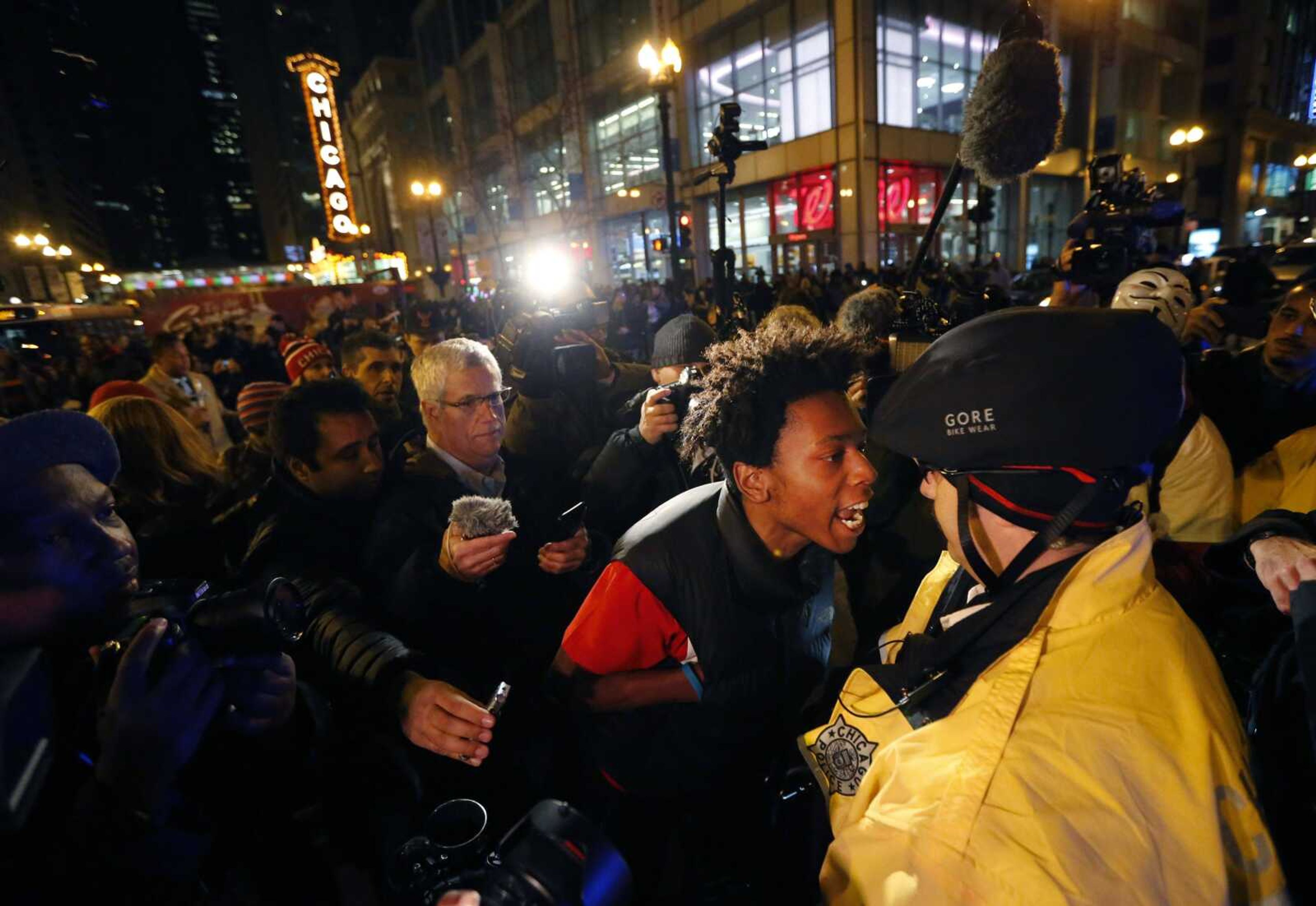Chicago mayor fires police chief
CHICAGO -- Rahm Emanuel sought for months to keep the public from seeing a video that shows a white police officer shooting a black teenager 16 times. Now, a week after the video's release, the Chicago mayor has fired the police superintendent, created a new task force for police accountability and expanded the use of body cameras...
CHICAGO -- Rahm Emanuel sought for months to keep the public from seeing a video that shows a white police officer shooting a black teenager 16 times. Now, a week after the video's release, the Chicago mayor has fired the police superintendent, created a new task force for police accountability and expanded the use of body cameras.
But Emanuel's effort to keep the video secret and his long wait to take action at the police department have stirred deep skepticism among those protesting the teen's death.
Many activists are especially incensed by the fact the video first surfaced during a re-election campaign, when the mayor was seeking African-American votes.
"In our community, everyone is saying it (the video) was not released because of the election," said Corey Brooks, a prominent black minister.
Had it emerged earlier, the video "could have buried" Emanuel's chances for re-election, Columbia Law School professor Bernard E. Harcourt wrote in a New York Times op-ed piece published Monday.
The mayor defended the decision to withhold the video from the public until the investigation was finished and the officer charged with murder.
"You don't compromise an ongoing investigation," he said. "Yet it's clear you all want and the public deserves that information. They're two conflicting principles."
Asked by a reporter whether Emanuel thought he would become a distraction himself and would consider resigning, the mayor responded, "You'll make that judgment. I think I'm doing my job."
Emanuel on Tuesday announced the dismissal of Garry McCarthy, who only days ago insisted to reporters the mayor had his "back." McCarthy's departure came just a week after the video was released.
The mayor praised McCarthy's leadership but called it an "undeniable fact" the public's trust in the police had eroded.
"Now is the time for fresh eyes and new leadership," Emanuel said.
Protesters have been calling for McCarthy's dismissal in response to the handling of the death of Laquan McDonald, a 17-year-old who was killed in October 2014.
Some aldermen, particularly members of the city council's black caucus, also have been seeking McCarthy's resignation, citing the city's crime rate and questions about the department's transparency.
The city released video of the shooting only after a judge ordered it to be made public. On the same day, officer Jason Van Dyke was charged.
Alderman Howard Brookins Jr., a member of the black caucus, said he appreciated Emanuel's "willingness to change course."
Chief of detectives John Escalante will oversee the department until a permanent replacement is named, Emanuel said.
The mayor also announced the creation of a task force on police accountability that will help develop an early-warning system allowing the department to intervene with problem officers racking up complaints from the public.
Van Dyke was the subject of 18 civilian complaints over 14 years, including allegations he used racial epithets and excessive force. Complaints against police are not uncommon, but the number filed against Van Dyke was high compared with other officers.
Emanuel's office announced Sunday the police department would expand its use of officer body cameras from a single district to roughly a third of Chicago.
Through a spokesman, McCarthy declined to comment Tuesday.
Emanuel introduced McCarthy as his pick to lead the department in May 2011, replacing former FBI agent Jody Weis, who was unpopular with many rank-and-file officers who claimed Weis did not stand behind them. The mayor credited McCarthy with modernizing Chicago's police force, getting illegal guns off the streets and pushing a community policing strategy the mayor said had reduced overall crime rates to a record low.
In particular, McCarthy was a constant preacher on the need for tougher punishments for gun offenses.
He hammered on the fact many murder suspects had prior gun convictions, which McCarthy argued should have kept them off the streets.
Connect with the Southeast Missourian Newsroom:
For corrections to this story or other insights for the editor, click here. To submit a letter to the editor, click here. To learn about the Southeast Missourian’s AI Policy, click here.









